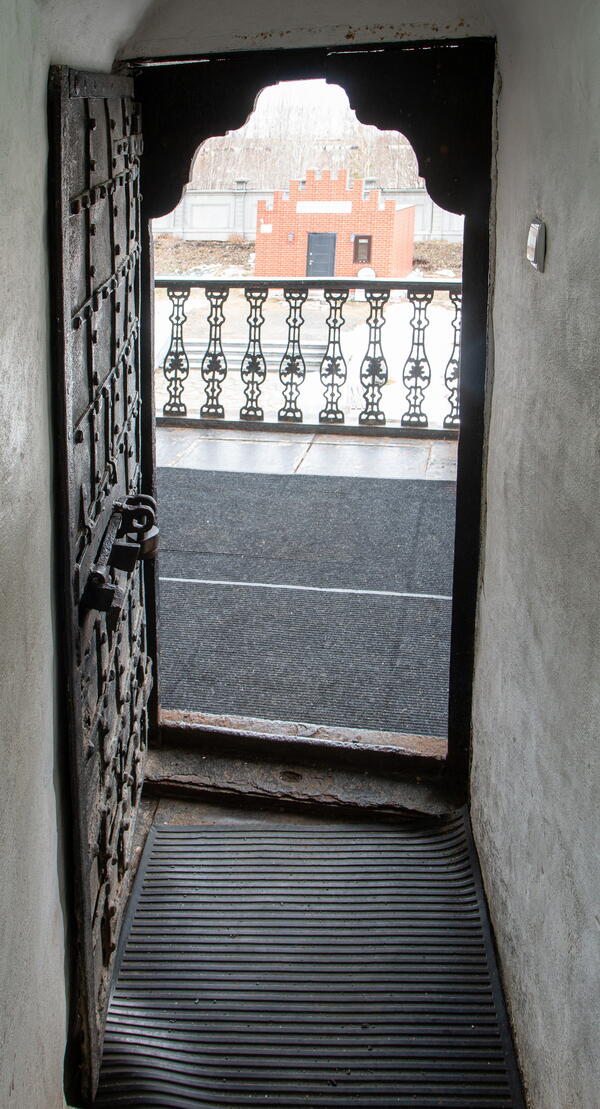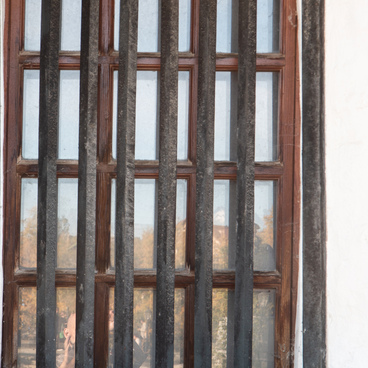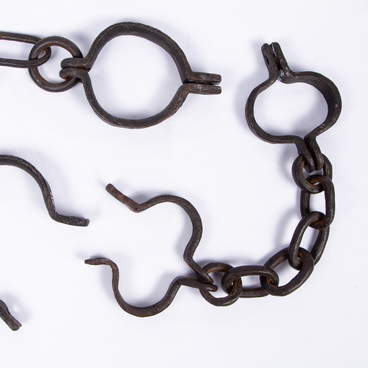The Nevyansk Tower is remarkable in its architectural design. For the first time metal structures were widely used in this and other 18th-century buildings: the door and window frames in the tower were made of cast iron.
The door frame is the fixed structure around the opening of a door that encloses the side and top of a doorway; hinges are used to attach the door to the frame. The door frame consists of four cast-iron members connected by tenons: the vertical ones are the side jambs, the top crossbar is the head jamb, and the bottom crossbar is the sill. The insert fits into the masonry nest and is attached to the wall with spikes. The cast threshold is attached with spikes.
Cast iron art appeared in the Urals at the very beginning of the 18th century. The essence of the production technology was as follows: using wooden or metal models and a core box, parts of the mold cavity were made from a sand-clay mixture, which were put into special boxes (flasks) and formed the outer contours of the castings, and rods that created holes in the castings. The casting mold assembled from these parts was filled with liquid metal through a sprue and, after it solidified, it was disassembled, and the cast iron was removed.
Behind this door is a “secret” passage in the northern wall of the square tower. The hollow wall is 1 meter 78 centimeters thick with a stone staircase inside that has cast iron slabs. The staircase leads to the former factory laboratory, or “assay office” on the third floor. It is noteworthy that internal staircases and passages have been widely used in religious, public, residential, and other buildings since olden times.
The “assay” laboratory room is in the main part of the tower; it has a vaulted ceiling. To provide daylight, the room has two windows on the western and southern facades of the tower.
According to the decree of 1720, all factories were required to conduct laboratory tests of the ore they mined. It was from this time that laboratory tests of ores, mandatory for factories, were carried out in Russia. Akinfiy Demidov was practically forced to start his own factory laboratory. He decided to place it within the walls of the tower. According to the Ural local historian S.A. Lyasik, the laboratory “was working quite legally, although the access was extremely limited.”
The “assay room” was mentioned in the “Description of Factories, with Forges, Hammers and Other Things” compiled in 1746 of the Nevyansk plant, prepared by the commission of the mechanic Bakhorev: “The assay room is under the tower, there are 2 iron stoves and one forge in it.” In 1848 this room was already empty.




